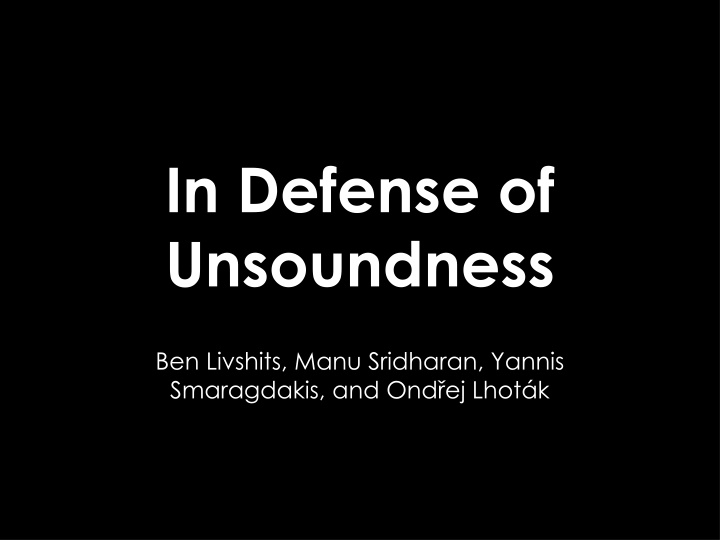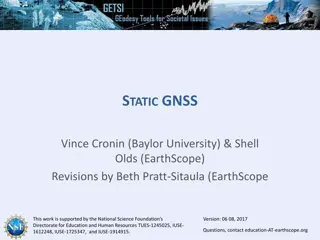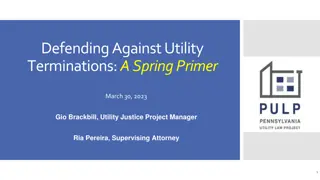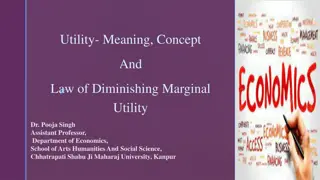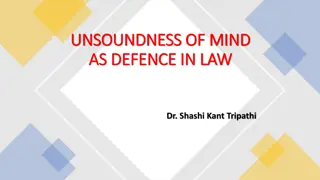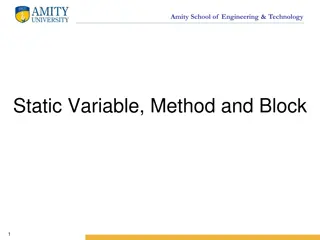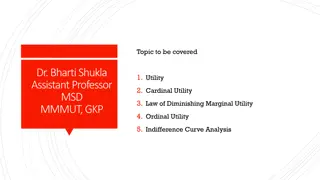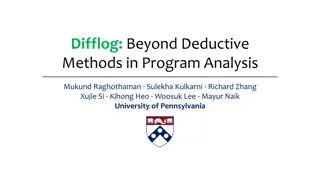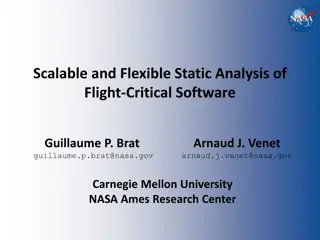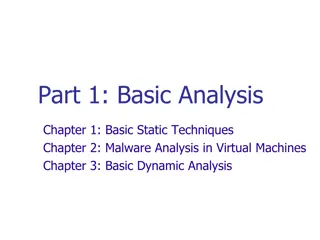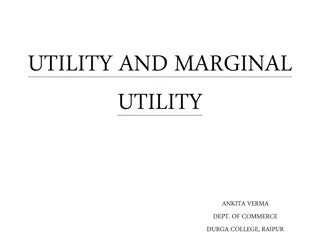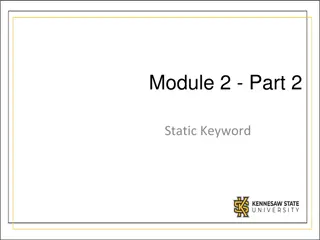Unsoundness in Static Analysis: Challenges and Utility
The discussion explores the prevalence of unsoundness in static analysis for realistic programming languages, highlighting common language features and their impact on soundness. It questions the necessity of achieving absolute soundness and presents scenarios where unsound analyses are tolerated in various client applications and tools.
Download Presentation

Please find below an Image/Link to download the presentation.
The content on the website is provided AS IS for your information and personal use only. It may not be sold, licensed, or shared on other websites without obtaining consent from the author.If you encounter any issues during the download, it is possible that the publisher has removed the file from their server.
You are allowed to download the files provided on this website for personal or commercial use, subject to the condition that they are used lawfully. All files are the property of their respective owners.
The content on the website is provided AS IS for your information and personal use only. It may not be sold, licensed, or shared on other websites without obtaining consent from the author.
E N D
Presentation Transcript
In Defense of Unsoundness Ben Livshits, Manu Sridharan, Yannis Smaragdakis, and Ond ej Lhot k
April 14 19, 2013, Dagstuhl Seminar 13162 Pointer Analysis
Are Static Analysis (papers) Sound? Sound: capture all program behavior Must analysis results hold during program execution? Of course not! Virtually all recent whole program analyses for realistic languages are unsound
Unsoundness is Everywhere! Omit conservative handling for common language features Unsoundness lurks in the shadows caveats only mentioned off-hand in an implementation or evaluation section.
Nasty Language Features Typical (published) whole-program analysis extolls its scalability virtues and briefly mentions its soundness caveats. Java: reflection and JNI JavaScript: eval and dynamically computed properties C/C++: assumptions about memory region and pointer arithmetic
Can These Language Features be Ignored? Most of the time the answer is no These language features are nearly ubiquitous in practice. "Assuming the features away" excludes the majority of input programs. For example, very few JavaScript programs larger than a certain size omit at least occasional calls to eval.
Could all these Features be Modeled Soundly? In principle, yes. In practice, destroys the precision of the analysis Must be highly over-approximate. Huge imprecise result = useless. Imprecision destroys scalability
Soundness is not Even Necessary! Many clients can tolerate unsoundness. IDEs (auto-complete systems, code navigation) General purpose bug detectors Automated refactoring tools Even hints for runtime optimization
Should We Even Try? Soundness is extremely hard to achieve for a whole-program analysis in a realistic, modern language, due to programming language features that are very hard or even impossible to analyze precisely. Even if achieved the precision is likely to be destroyed. What is a reasonable middle ground?
Soundiness Sound modulo inevitable unsoundness best-effort soundness sound except for the things we all know about
Middle Ground: Soundiness We draw a distinction between a soundy analysis, which aims to capture all dynamic behaviors within reason, and an unsound analysis that deliberately ignores certain behaviors We argue that soundiness is a good line in the sand to draw in order to avoid abuse of the observation that "everyone's analysis is unsound."
Moving Forward Soundy is the new sound, de facto, given the research literature of the past decades. Papers on unsound analyses should explain the implications of their unsoundness. For nasty features, more studies should be published to characterize how extensively they are used in typical programs. As a community, we should provide guidelines on how to write unsound analysis papers. The PL research community should embrace unsound analysis techniques and tune its soundness expectations.
